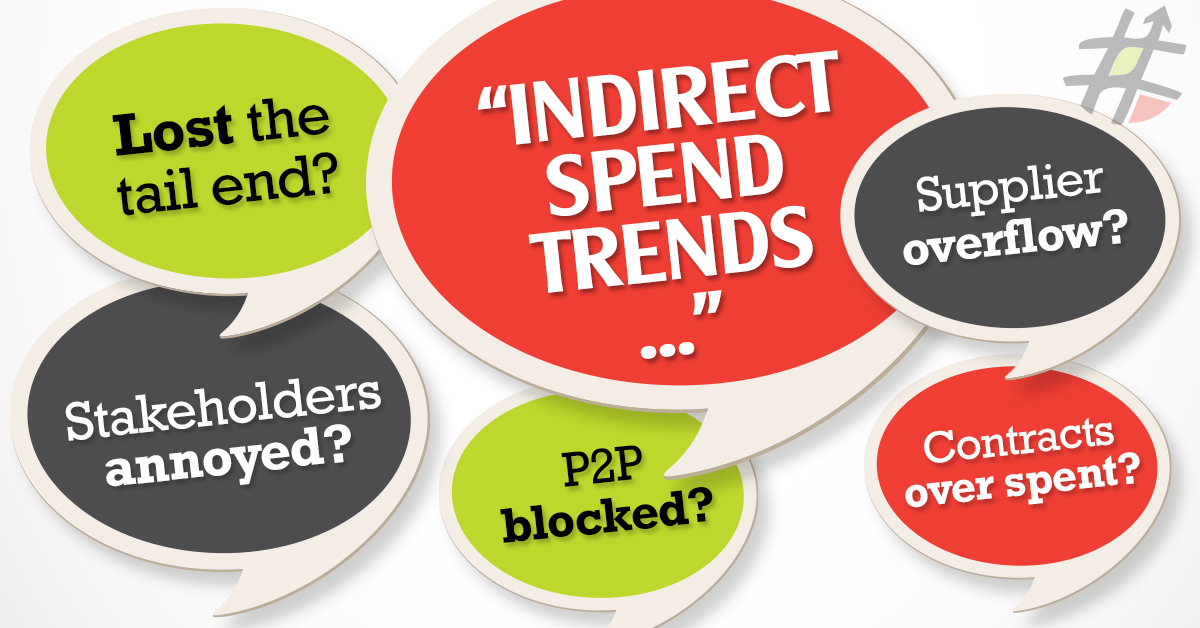
Indirect spend shares the fate of many a New Year’s Resolution. We make promises to tackle it head on and then abandon it at the first sign of difficulty. It’s tempting to put it in the too hard basket, but ignoring it could very well be doing you terminal damage. Indirect spend has the potential to be one of the largest expenditures in any organisation, and the chance of this occurring is only getting higher. McKinsey reports that indirect spend has been growing by an estimated 7% every year, globally, since 2011. It can make or break your organisation.
It’s time we took hold of the reins. It’s 2020, and the available technology that allows us to take control of our indirect spend is more advanced than ever.
What is indirect spend and what makes it hard to control?
Indirect spend covers all the expenses incurred for materials, services and maintenance required to run a business. Office supplies and equipment, travel, components, hardware – all examples of indirect spend. As a result, it’s often fragmented across multiple locations, units, categories … to the point where tracking it is a pain in the neck (and hip pocket).
Thankfully, we live in the age of technology. If you want to take indirect spend out of the too hard basket, software is the means.
Advanced technology hands us the reins
To overcome our collective inertia towards effective indirect spend analysis and control, McKinsey proposes a six-pronged approach. These coordinated, technologically forward approaches capture the untapped value of indirect procurement.
- Intelligent Spend Engines
AI-based automation tools that can be used to classify and categorise spending. PI Data Analytics, for example, offers complex spend analysis that can form the digital foundation of an indirect spend revolution.
- Advanced Analytics Solutions
Goes hand in hand with intelligent spend engines. PI Data Analytics combines advanced analytics spend analysis to offer complete solutions. Specifically, companies use advanced analytics to identify cost-saving and process-optimising opportunities.
- Seamless B2B Ordering
This is about partnerships with business service providers that can be leveraged to reduce costs and increase service levels. This process involves using the latest tools for supplier evaluation and selection, cross-category orders and financial traceability. It also covers leveraging IoT for more intelligent warehousing and distribution.
- Zero-based Budgeting
This has arisen due to budget-creation software that applies zero-based policies, which allows companies to stack costs starting from zero. The ZBB can then be used to negotiate at scale.
- Automated Procure-to-Pay (P2P)
Essentially about harnessing the power of robotic process automation (RPA) and machine learning to improve processing times. RPA takes care of the drudgery while machine learning and AI analyse the date to uncover potential for improvement.
- Financial P&L Interlink
This is a cost management software that helps translate suggested actions for improvements into real financial impact. As a result, companies gain the benefits of improved forecasting and budget planning with clear visibility into how procurement influences the P&L.
2020 is all about indirect spend
With a sound technological base, the traditional approaches to category management enable better control over indirect procurement. Technology will give organisations an agile edge in 2020, allowing them to remove indirect procurement from the too hard basket and tackle it head on.
If getting fitter was your New Year’s Resolution, then you’d hire a personal trainer. If tackling indirect spend is on your radar (and it needs to be), contact the organisational fitness trainers at PI Data Analytics now, and develop the agility your business needs to keep ahead. Let’s talk!
Get Procurement Insights That Matter
Join 10,000+ procurement professionals getting monthly expert cost-optimisation strategies and exclusive resources. Unsubscribe anytime.
Join








